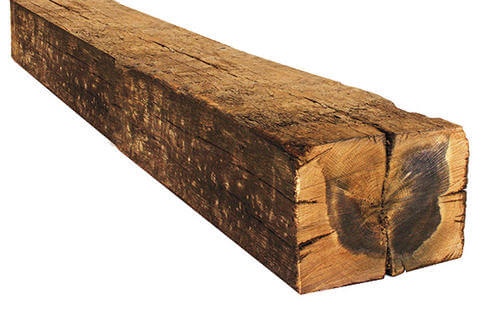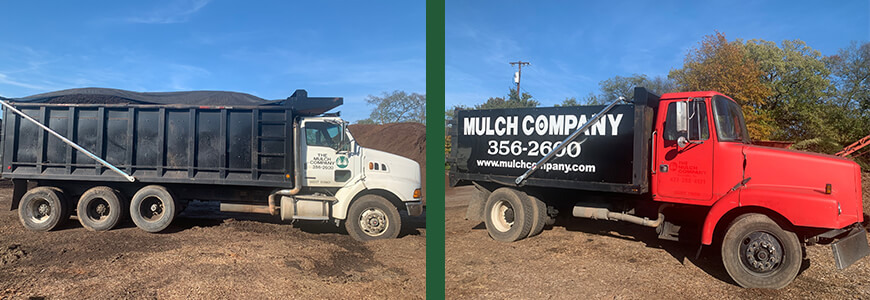Don’t Know Much About Mulch or Soil?
Frequently Asked Questions About Mulch
What is mulch?
Mulch is a forest product, made from hardwood and pine trees. The Mulch Company shreds and sizes the raw material through grinders and screens into small uniform size pieces. The shredded mulch is then aged in large piles.
The Mulch Company’s mulch is 100% natural and organic, perfectly safe to handle and spread around your home.
A layer of mulch adds a professional touch to your landscape and will enhance the overall appearance of your property. Mulch is easy to work with, you can mold it into whatever shape you prefer, and then dust it off your hands. It’s a great way to spend time in your yard with your family.
Click here to learn more about our mulch products.
What is the best mulch?
An organic mulch!
All mulch produced by The Mulch Company is organic.
An organic mulch decomposes over time into humus, improving the moisture retaining capacity of your soil, making soils less compact and more productive through improved aeration.
An organic mulch insulates your plants from cold or heat.
The Mulch Company ages our mulch so that you spread properly composted material around your plants.
Click here to learn more about our organic mulch products.
Why should I mulch?
For moisture control:
In dry periods mulch retains moisture around plants’ root systems, and helps hold down costly water bills.
For weed control:
In the growing season, a layer of mulch helps prevent germination of weeds.
For insulation:
During cold weather mulch acts as a protective blanket for plants, moderating severe temperature changes which can damage plant root systems.
For soil enrichment:
As mulch decomposes it enriches the soil with natural organic matter, and enhances the ability of the soil to retain moisture.
Click here to learn more about our best mulch products!
How should I install mulch?
Prepare the area:
Remove weeds and grasses by hand. Use herbicides only in difficult cases such as Bermuda grass but be sure to follow the manufacturer’s instructions!
Figure how many cubic yards of mulch you need:
Measure the square footage of the ground that you plan to cover with mulch (multiply the area’s length by its width). Divide the square footage by 80. This converts your measurement into cubic yards. You can also use our mulch calculator.
Use a pitchfork rather than a shovel to spread the mulch evenly around your plants. Mulch around trees should look like a donut, with the trunk in the donut hole. Don’t heap mulch around the trunk of a tree or plant. It will cause the outer layer of bark on the tree to rot and leave your plants vulnerable to any number of diseases and insects. Finish off the job by hand, smoothing the mulch and molding the edges to give a “raised bed” effect.
Take care of it during the year:
Remember that your mulch is a natural organic product and it will weather some from exposure to rain and sun. But only the top layer will fade. The mulch just below the surface of the weathered mulch is still dark! Simply rake off the top layer with a leaf rake and you will have a fresh look all over!
Click here to learn more about how to mulch.
How do I get mulch delivered?
Order online!
You can order online at mulchcompany.com. Mulch Company will deliver tomorrow or the next day at the latest. And you don’t even have to be at home when the mulch is delivered. Just mark the spot where you want the mulch dumped. Use a newspaper with a brick on top of it as a marker. The Mulch Company driver will dump your mulch on top of the marker. Please remember to explain clearly on the order form where you are going to place the marker.
Order by telephone:
You can order by telephone: (615) 356-2600. Mulch Company will deliver the same day or the next day at the latest. You will be given a delivery time when you order, and your mulch will be delivered on time. And you don’t even have to be at home when the mulch is delivered. Just mark the spot where you want the mulch dumped. Use a newspaper with a brick on top of it as a marker. The Mulch Company driver will dump your mulch on top of the marker. Please remember to explain clearly where you are going to place the marker.
What is the difference between topsoil and fill dirt?
Fill dirt is a generic term that refers to anything that can be used to fill a hole. Topsoil, on the other hand, is very specific. Topsoil should be used as the top 4–6 inches of soil, as this type of soil is used for planting a lawn, shrubs, trees, flowers, or vegetables.
Fill dirt is best obtained from local contractors who wish to dispose of the surplus soil from a building site. Just ask the contractor for fill dirt, not topsoil.
To learn more about Tip Top Soil™ (the best topsoil in Nashville and Tennessee!) click here
What soil should I use for re-seeding a lawn?
We recommend that you use Tip Top Soil™ for re-seeding a lawn. That’s the best topsoil product. You should put four inches of Tip Top Soil™ on top of your existing lawn. Then seed, and cover in straw.
For a smart gardener’s tip on how to re-seed your lawn, click here
What is the best soil for gardening?
The best soil for vegetables and gardening is Ultra Soil™. Ultra Soil™ has the advantage of Piney Fines™ as an ingredient. That makes Ultra Soil™ a more acidic soil. Vegetables thrive in a soil that has more acidity than less.
Click here to learn more about Ultra Soil™.
How do I make a raised bed?

First, buy several old railroad ties and loosely stack them two or three feet high so water can seep out. Don’t bolt or glue the ties together, they need to be porous to allow water to drain.
Next, place big, tennis-ball-sized rocks in the bottom six inches of the bed. This is for drainage. If you don’t loosely stack your railroad ties with spaces between them and if you don’t create a layer of stones at the very bottom of the bed, you end up with a bathtub instead of a raised garden bed! That leads to plants dying from root rot. Overwatering and a raised bed that does not shed water are the two most common causes of failed gardens.
Next, place Ultra Soil™ on top of the rocks. Then, plant your vegetables in the Ultra Soil™.
To keep weeds out, we recommend that you mulch the plants as they come up. Mulch with Gourmet Compost™ (an organic leaf compost with Piney Fines™ added into it).
Click here to learn more about the best soil for raised garden beds.
Do you deliver topsoil?

Our single-axle delivery trucks can bring you between 5 and 9 cubic yards of topsoil. If your project requires more than 9 cubic yards of topsoil, we need to bring this to you in a very large tri-axle dump truck.
For a smart gardener’s tip, if your project requires more than 9 cubic yards of topsoil, we recommend that you do not attempt to move the soil with a wheelbarrow and shovel. Instead, go to your local home store and rent a Dingo. You can rent this equipment for a few hours at a time, and use the equipment to move the soil delivery around.
To view Home Depot large equipment rental options in your area, click here.
And click here to learn more about soil delivery options.

When should I install topsoil?
If your purpose for installing topsoil is to seed a lawn, plant a few flowers, or place some vegetable seeds, any time from Labor Day to Thanksgiving is the best time to plant. This rule applies to planting shrubs, perennials, and tree saplings as well.
Fall is the best time for planting because plants go into dormancy during these brisk months, making it easier to transplant, plant, and seed. Cooler weather means plants are less stressed by heat. And at the same time, the soil is still warm during the autumn months, perfect for root development!
Click here to learn more about the best soil for fall planting.
Where can I find mulch near me?
Pick it up yourself: If you need less than Mulch Company’s minimum delivery of 5 cubic yards, you can pick up 1 yard or more in your truck at one of Mulch Company’s convenient locations.
Get In Touch
Have a question or need some guidance? Send us a note here.


